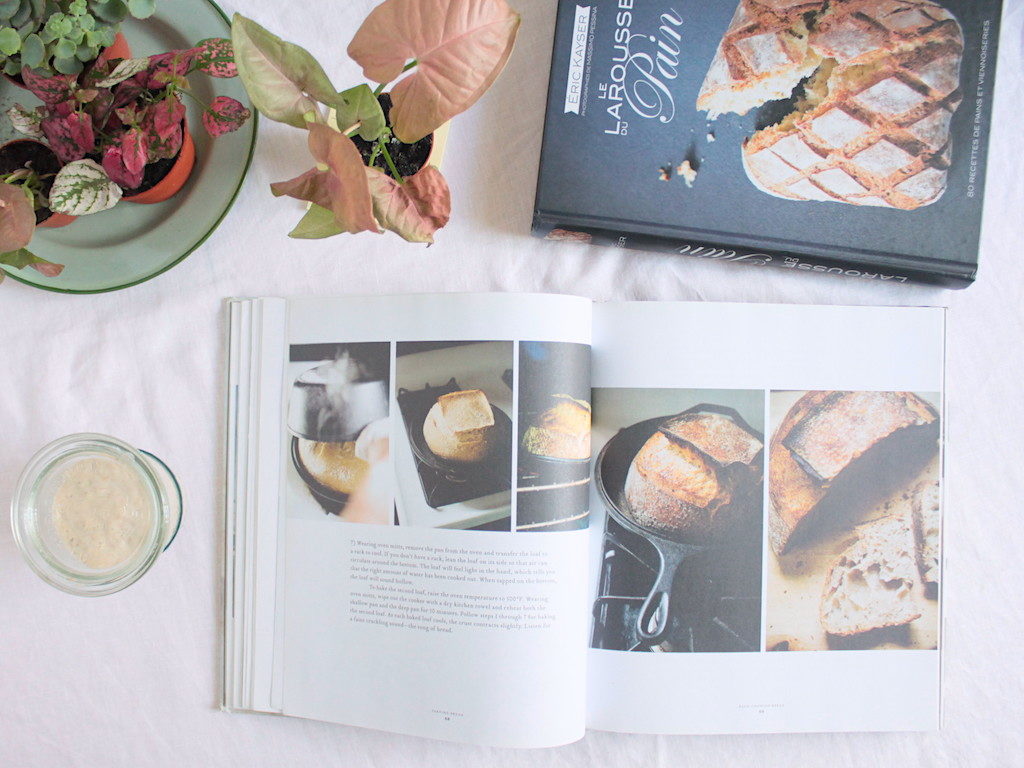_
My newest obsession is sourdough bread.
It only comprises four ingredients – flour, water and salt (a crucial fourth ingredient being time that does the magic in creating and nurturing the wild yeast). What’s exciting is that with just these four ingredients, the results can be wildly different based on technique, quality of flour and temperature. Every baker has their ideal loaf that they are chasing, and for me, it’s a crisp crust, light aerated and shiny interior, and a faintly sour flavour.
Tartine Bread (USA |UK | India) is what got me hooked on sourdough bread making many years ago. I must admit its instructions are rather verbose, which scared me off initially. Each time I took the courage to open up the pages, I’d start reading the method and just put the book away. It didn’t help that I was living in France and skipping downstairs to the local boulangeries was a lot easier than executing 20 pages of instructions. But then the move to London happened, and the thought of consuming white sliced bread petrified me. I was scared I’d never eat bread made with heritage grains and chestnut flour, or buttery loaves dotted with walnuts. With the book sitting on my kitchen table, I created my starter, fed it like a pet, baked numerous loaves and tracked all of my observations and tribulations on a little bread blog I created to document the process along with my many of my visits to the bakeries in Paris.
My first loaves, although edible, were dense and nothing like the loaves of Paris I kept comparing them with. To remedy that, I got myself Parisian baker, Eric Kayser’s Larousse Bread (USA |UK | India). The step-by-step photography is reassuring with a wide spectrum of breads covered through the book. The instructions are to the point which works well for those who want to make breads without being distracted by lengthy narratives. Kayser does use a tiny quantity of yeast to lift the bread and shorten fermentation time, yet retain quality flavour and texture.
With each loaf, I continued working on my technique, researching methods by learning from some of the best sourdough bakeries in London and making friends with bakers in Paris. But even when I finally achieved something noteworthy, the obsession to keep getting better never ceases.To feed this obsession, I devour books on the subject by authors from around the globe, each week tinkering with my techniques slightly.
Sourdough bread takes time and a fair amount of understanding before one can begin mixing together ingredients. Although the inputs are straightforward, the series of stages in the sourdough’s life involves meticulous care. I’m currently reading Flour Water Salt Yeast by Ken Forkish (USA |UK | India) to revise my technique and learn another baker’s perspective on baking.
Another bread book on my shelf worth a mention is Tartine Bread No. 3. (USA |UK | India) It is based on the same techniques as the previous book by Chad Robertson, but pays more attention to exploring ancient wheat and alternative grains in an attempt to blend and layer flavours instead of using only a single variety of a grain. It may not be suited to Indian baking because it’s hard to find the varieties of flours in the market, but nonetheless it’s a lesson in pushing beyond the norm.
Get any of the books and read them over a few times before you bring out the flour. Use scales. Learn the science. And most importantly – stay obsessed!
This story was first published for The Hindu, for which I write a monthly column.
